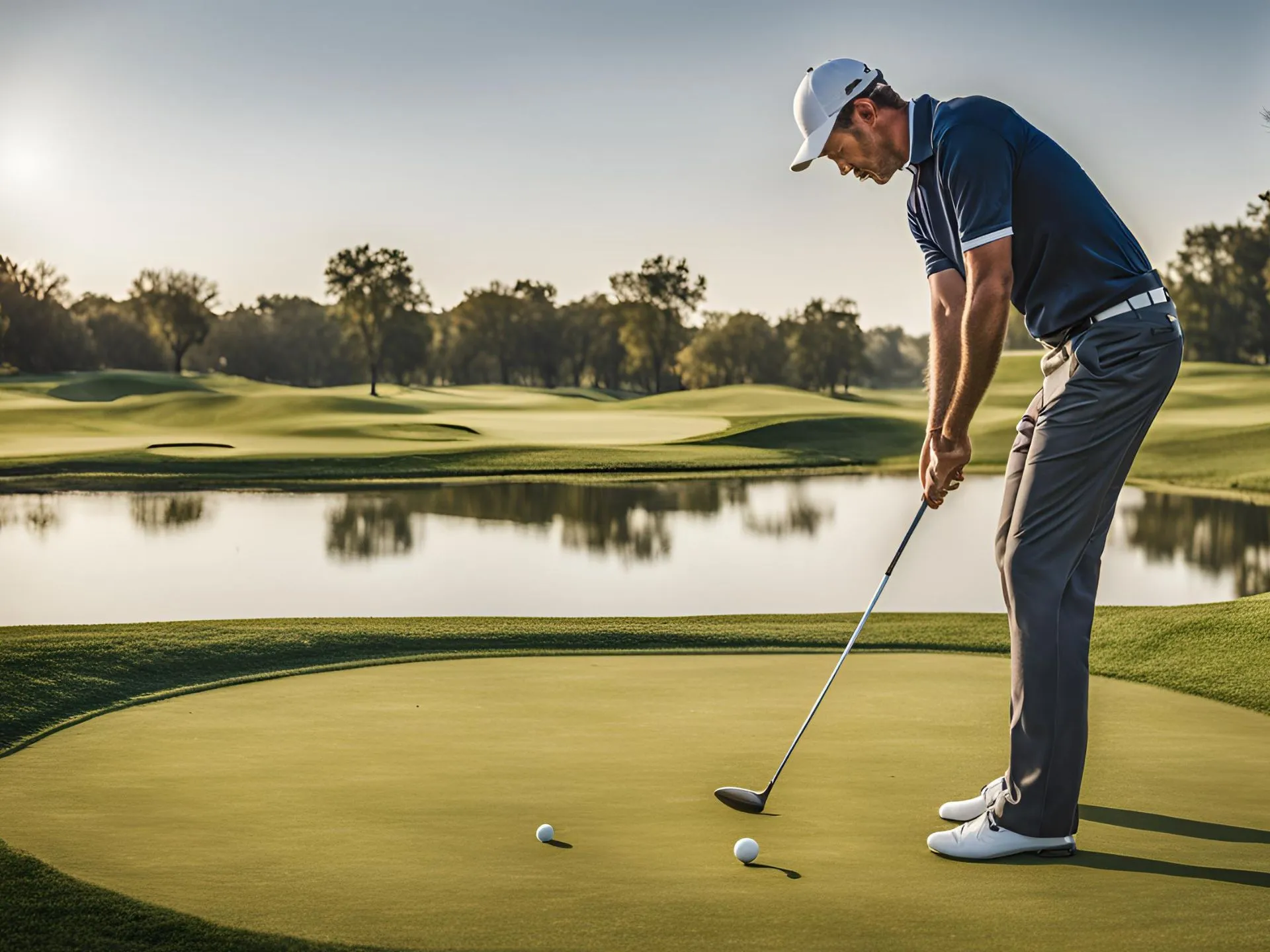Golf is more than just a sport; it’s a way of life for many. But who exactly is the average golfer? Understanding golf demographics helps us get a clearer picture of this fascinating game and its players. From age groups to participation rates, let’s dive into the nitty-gritty of who plays golf in the U.S. and what trends are shaping the future of the game.
What Are the Key Golf Demographics for the Average Golfer?
What age group represents the average golfer?
The average golfer tends to be in their 40s to 60s, but golf is no longer just a pastime for older folks. According to the National Golf Foundation (NGF), while a significant number of golfers in the United States fall into this age group, there’s a growing trend of younger players picking up the game. More people aged 18 to 34 are discovering the joys of the fairway. It’s important to recognize that the average golfer’s age can vary greatly depending on the region and the type of golf facilities available. With junior programs emerging and golf companies focusing on attracting young talent, we’re likely to see a shift in the demographics of golfers who are hitting the tee.
How do demographics impact golf participation?
Demographics play a crucial role in influencing how many people play the game of golf. Social and economic factors, such as income level and access to golf facilities, can greatly affect participation rates. For instance, golfers in affluent areas might have easier access to exclusive golf courses, while those in urban settings may prefer more accessible public courses. The golf industry is increasingly aware of these nuances and is adapting its marketing strategies to engage different demographics. Diversity in golfing communities is also on the rise, with female golfers and players from various ethnic backgrounds contributing to a more inclusive atmosphere in the game.
What trends are emerging in golf demographics?
As we look into 2023 and beyond, several interesting trends are emerging in golf demographics. There’s an increasing focus on inclusivity, with golf companies and organizations working hard to attract a wider range of players. The rise of technology is another game-changer; more golfers are using apps to track their scores and improve their handicap, making the game feel more engaging. With the PGA Tour and other professional golf events showcasing diverse talent, younger audiences are becoming more drawn to the sport. It’s clear that golf is evolving, and the demographics of its players are following suit.
How Many People Play Golf in the United States?

What is the current participation rate in golf?
As of 2023, there are approximately 25 million golfers in the U.S. This includes both on-course golfers and those who enjoy the game off-course, like driving ranges and simulators. Participation rates have seen fluctuations over the years, but the overall trend is positive. Thanks to initiatives from the NGF and various golf companies, more people are being encouraged to play the game. The casual nature of modern golf, such as playing shorter rounds or participating in local tournaments, has made it easier for newbies to join in.
How do golf demographics vary by region?
Golf demographics vary significantly by region, which can influence the number of golfers in specific areas. For example, states like Florida and California boast a high number of golfers due to their favorable climates and abundance of golf courses. In contrast, regions with harsher winters may see lower participation rates. The accessibility of golf facilities also plays a role in regional demographics. In metropolitan areas, you might find more diverse and younger golfers, while rural areas may have a larger percentage of long-time, older players. Understanding these regional trends is essential for golf companies aiming to tailor their offerings.
What role do golf facilities play in attracting golfers?
Golf facilities are the backbone of the golfing community. They not only provide the physical space for golfers to play but also create an atmosphere that can attract or deter players. Top-notch golf courses with state-of-the-art amenities are likely to draw in many players, including those who aspire to become pro golfers or compete in tournaments. Conversely, facilities that lack proper maintenance or accessibility may struggle to engage new golfers. The design of the course, the availability of lessons, and the overall golfing experience can significantly impact golfer demographics, influencing who will tee off and who will stay away.
What Is the Average Age of a Golfer?

How has the average age of golfers changed over time?
Over the last few decades, the average age of golfers has gradually shifted. While it used to be that the average golfer was primarily in their 50s and 60s, younger generations are now making their mark on the game. This evolution can be attributed to various factors, such as the rise of social media, which has helped promote golf as a trendy and fun activity among younger age groups. Golf companies are also investing in marketing that resonates with millennials and Gen Z, changing how the game is perceived and who is likely to play.
What age group is most likely to play golf regularly?
Today, the most active age group in golf tends to be between 40 and 54 years old. These individuals are often looking for both recreation and an outlet for social interaction. However, participation from younger players—those in their 20s and early 30s—is rapidly increasing. This younger demographic is often more likely to engage in casual rounds of golf and participate in off-course activities, which has led to a more vibrant golfing community. The average golfer may be older, but the new wave of golfers is shaking things up.
How does age influence golfing habits and preferences?
Age undeniably influences how golfers approach the game. Younger players may prefer shorter, more casual rounds, often opting for fun formats or mixed-gender tournaments. In contrast, older golfers may stick to traditional 18-hole rounds and enjoy the challenge of improving their handicap over time. Preferences for course types also differ; younger golfers might gravitate towards more relaxed, urban courses, while older golfers often favor classic, well-established golf clubs. As age demographics continue to evolve, golf companies must pay attention to these habits to cater to all types of players.
What Are the Trends in Golf Participation Among Junior Golfers?
How do junior programs impact the future of golf?
Junior golf programs are essential for fostering the next generation of golfers. They not only teach fundamental skills but also instill a love for the game. Engaging juniors through fun activities, tournaments, and mentorship from experienced players can significantly impact their desire to continue playing as they grow older. The PGA and various golf organizations are committed to promoting junior golf, recognizing that today’s youth are tomorrow’s avid golfers. These programs are critical for maintaining and enhancing golf participation rates in the coming years.
What demographics are represented in junior golf?
Junior golf demographics are becoming increasingly diverse. Programs aimed at underrepresented communities are making significant strides, encouraging youth from various backgrounds to participate. This diversity is crucial for the future of golf, as it opens the door to new players who bring unique perspectives and experiences to the game. By actively promoting inclusivity, golf companies can help create a more vibrant and representative golfing community.
How can golf companies attract more junior golfers?
To attract more junior golfers, companies need to innovate and make the game appealing. This could involve creating fun, engaging marketing campaigns that resonate with younger audiences or introducing affordable packages for families. Collaborations with schools and community organizations can also be effective in reaching potential new golfers. Finally, having accessible and welcoming golf facilities is paramount. Creating an environment where juniors feel comfortable and excited to play the game can lead to lifelong passion and participation, ensuring the future of golf remains bright.
What Role Do Golf Courses Play in Shaping Golfer Demographics?

How does the design of a golf course affect player demographics?
The design of a golf course can significantly influence its player demographics. Courses that prioritize accessibility, such as those with shorter holes or family-friendly amenities, tend to attract a broader range of golfers. Conversely, more challenging courses may appeal to seasoned players looking to improve their skills. Thoughtful course design that considers various skill levels can help ensure that everyone, from beginners to professional golfers, finds a place to enjoy the game.
What types of golf courses are most popular among different demographics?
Different demographics gravitate towards specific types of golf courses. Younger golfers might prefer trendy, informal layouts that offer a social atmosphere, while older golfers often seek out traditional courses with a rich history. Female golfers are becoming an increasingly important demographic, leading to a rise in courses that cater to their preferences, such as facilities that offer women-specific events and programs. Understanding these preferences is crucial for golf facilities aiming to create a welcoming environment for all.
How can golf courses adapt to changing demographics?
Golf courses must continuously evolve to accommodate changing demographics. This could mean offering alternative formats for the game, such as shorter rounds or more flexible tee times. Implementing family-oriented events and junior programs can attract a younger audience, while promoting inclusivity will ensure that various groups feel welcomed. Ultimately, adapting to the needs and preferences of diverse golfers is essential for the long-term sustainability of the golf industry. With the right adjustments, golf courses can thrive and foster a love for the game across generations.
What does Golf Digest say about the average golfer’s demographics?
According to Golf Digest, the average golfer in the U.S. is typically in their 30s to 50s, with a household income that often exceeds $100,000. This demographic is primarily made up of both men and women golfers, with an increasing focus on including more people of color in the sport.
What does Golf Digest say about the average golfer’s demographics?
According to Golf Digest, the average golfer in the U.S. is typically in their 30s to 50s, with a household income that often exceeds $100,000. This demographic is primarily made up of both men and women golfers, with an increasing focus on including more people of color in the sport.
What’s the average handicap for golfers in the United States?
The average handicap for golfers in the U.S. is around 12.4, which means that most players are shooting just above par. This number can vary based on the skill level and experience of the players.
How many golfers are there in the United States?
As of 2021, there are about 26.6 million golfers in the United States. This number has been steadily increasing, showing that more people want to play the game.
What’s the average number of rounds of golf played per year?
On average, golfers in the U.S. play around 8 to 15 rounds of golf each year. However, this can vary widely depending on personal schedules and access to golf venues.
How do scoring averages differ between genders in golf?
Generally, male golfers have lower scoring averages compared to female golfers. This is partly due to the number of years they’ve been playing and the opportunities available to them to improve their game.
What sports associations track golf demographics?
Organizations like the National Golf Foundation (NGF) and the United States Golf Association (USGA) regularly track and publish data regarding golfers’ demographics and participation trends.
What are some popular golf entertainment venues?
Venues like Topgolf and other golf simulators have become quite popular for both casual players and those looking to refine their short game. These places offer a fun way to practice without the pressure of a traditional round of golf.
How can someone turn pro in golf?
To turn pro, players generally need to compete in amateur tournaments, gain experience, and possibly attend Q-School to earn a spot on a professional tour. It takes a lot of dedication and skill to make that leap!
What should I do if I encounter an error while trying to access golf statistics online?
If you run into an error while trying to access sites like golfdigest.com, it’s best to check your internet connection first. If everything seems fine but the issue persists, you can always contact us for help with any specific questions or concerns.
Related More




